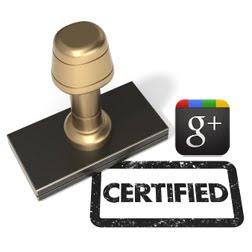 Copywrite, Ink. turns 20 in August. To put that in perspective, the creative computer of choice was a monochrome Mac Classic, preferably one with a flying toasters screen saver installed. Nirvana's Nevermind, led by the hit single "Smells Like Teen Spirit," became the most popular U.S. album of the year. And Tim Berners-Less had just announced the World Wide Web project.
Copywrite, Ink. turns 20 in August. To put that in perspective, the creative computer of choice was a monochrome Mac Classic, preferably one with a flying toasters screen saver installed. Nirvana's Nevermind, led by the hit single "Smells Like Teen Spirit," became the most popular U.S. album of the year. And Tim Berners-Less had just announced the World Wide Web project.The Cold War was over. The United States liberated Kuwait, and we entered a recession. Generation Xers were mostly pissed off.
I had already earned some agency experience. I worked at an agency and public utility while in college and living in Los Angeles and Reno. But even before I knew there was a communication field, I had done some freelance work right out of high school.
Ten Things You Might Learn After 20 Years With A Communication Firm.
1. People Are People. In working with, talking to, and interviewing some of the most prominent, influential, and wealthy individuals in the world and having the distinct pleasure of interviewing people whom others would consider nobodies, you eventually learn there is no difference between them. Both have invaluable insights and near-debilitating insecurities. The only time class, wealth, and status make a difference is when people allow their own sense of proportion to overshadow who they are, and that is a different problem all together. Treat people equally.
2. Own Every Mistake. Inevitability, you will meet business owners who have been taken advantage of or otherwise harmed by investors, clients, contractors, and employees. The truth is that every mistake directly links to the top, either in the decisions they make or the people they delegate those decisions to. More importantly, business isn't a science, which means there will be mistakes. Make them, own them, learn from them, and forgive them. You can't learn from mistakes you don't own.
3. Talk Is Cheap. Until it is written in a contract or cashed at the bank, promises are as tangible as the wind. Clients who promise the moon and the stars in exchange for breaks on the front end are disingenuous or delusional. The lesson here is simple enough. Treat those promises for what they are — an investment in someone else's business, budget, or career if they are a marketing manager — as much as your own exploration into an opportunity. Anything else is talk.
4. Everything Is Temporary. Companies grow, shrink, and change all the time. They will win, lose, rise, decline, and rise again. Never place too much emphasis on chasing after or catering to choice accounts at the expense of all other clients. The average account will stay with a good firm for four years (our average is significantly longer). Firms that feel secure are generally one change away from losing the account. It pays to value the time you have with an account, but not worship it.
5. Everyone Is Valuable. Everyone on your team is valuable. It doesn't matter who they are or what they do: volunteer, freelance, part time, full time. The person who cleans the office is just as important as the person who lands the account. Likewise, employees are valuable but they are hardly invaluable. Much like most accounts do not stay with one firm forever, neither do employees. Make the most of the time you have them aboard.
6. Offices Are Overrated. While some professionals excel in offices and it's worthwhile to maintain them from time to time, they aren't necessary for the success of a communication firm and can sometimes be a liability in terms of overhead. For anyone working out of a home office, recognize the only people who frown on it don't have enough experience to know that many journalists, musicians, producers, radio talk show hosts, business people, investors, executives, and like-minded professionals do most of their work from home offices. Do what works for you for now.
7. Planning Is Critical. Persistence and perseverance alone won't ensure survivability. After a firm becomes solvent, look to create contingency plans. Most agencies and firms fail, specifically, because their operations are based exclusively on accounts, which requires them to hire and lay off based on those accounts. Several agencies shuttered up in the last few years because of it, especially those tied to specific industries. Diversify industries, locations, and revenue strategies. Keep the faith for the best while planning for the worst.
8. Give Back, Not In. One of the smartest things any firm can do is align with nonprofits, giving them the opportunity to make new connections as well as support their community. On the flip side, giving back does not mean giving in or fooling yourself into believing you have ownership. Recognize when any commitment begins to take a negative turn and then walk away. Politics is a sure indicator. Business owners don't have time for it, whether it's a nonprofit or professional organization and participation can adversely affect all those connections when board leaders or executives split the group.
9. Politics Is Baloney. Firms need to be vigilant in keeping pace with politics to prevent unneeded regulations, but never let politics dictate the company's mission, vision, or values. Politics is largely a different world in that success has everything to with electability and almost nothing to do with accountability. Besides, any wagon you hitch your star to is only as good as the next election. Other than making a few contributions, it's best to stay as far away from it as possible and keep most opinions close to the vest. The person you insult over political differences could have been your client.
10. Social Media Is Social. When you make connections online, they are just as valuable as any you make offline. And because of this, they deserve the same reverence. Some communication professionals try to separate the two, but only because they have yet to learn that some of the best and brightest connections you make will never be tied to geography. They're not. It ties directly back into #1 above — if class, wealth, and status are meaningless, how you meet someone is even more so.
There are dozens more than those I've listed here, but they came to mind. So what's next? Nobody really knows the lessons they might learn along the way except for the ones they need to learn. For right now, we're satisfied working with two startups on their near-term launches, developing our alternative review site, and nurturing relationships with select clients, colleagues, and friends (maybe you too). And then, of course, there are a few personal projects always simmering. Other than that, we're grateful (and I'm grateful) that Copywrite, Ink. has crossed the 20-year mark.




























